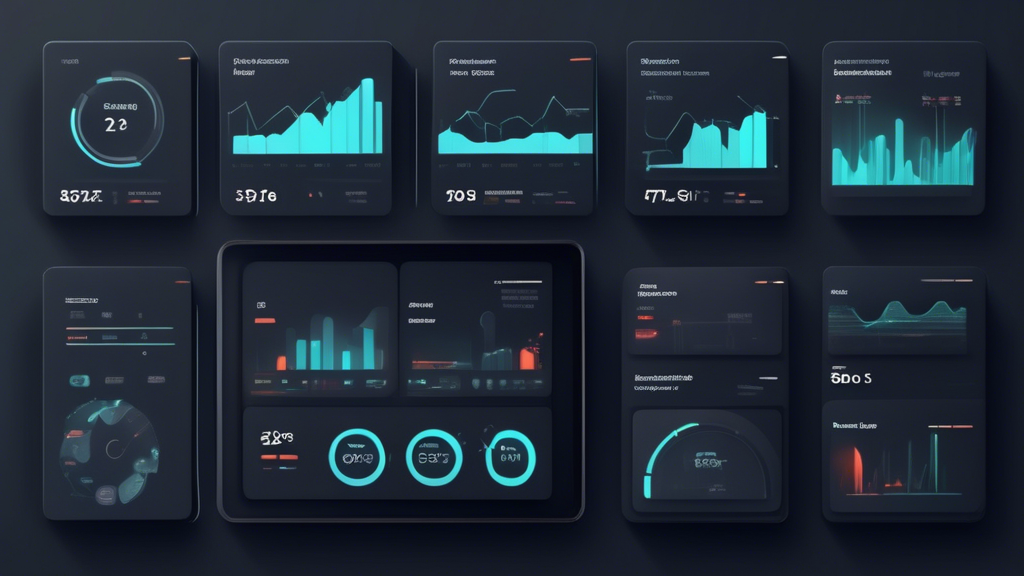In today’s digital age, uninterrupted online service is crucial for businesses and individuals alike. Downdetector plays a pivotal role in tracking and reporting internet outages. But how does it work? This article dives into The Tech Behind Downdetector: How It Monitors and Reports Online Outages. We explore the advanced technologies Downdetector uses to collect data, analyze patterns, and present real-time information to users. Understanding this tech helps appreciate the importance of consistent internet connectivity and the intricate process of outage monitoring and reporting. Join us as we uncover the intricate tech that powers Downdetector.
Introduction: Understanding Downdetector
Downdetector is a platform that monitors and reports online outages. It collects data from various sources to provide real-time information on service disruptions. This tool has become essential for users and companies to stay informed about internet service availability.
Outage monitoring and reporting are critical in today’s digital world. With so many services relying on internet connectivity, a disruption can cause significant inconvenience. Downdetector helps users identify whether an issue is widespread or localized, saving time and reducing frustration.
This article will explore the technology behind Downdetector. We’ll look at how it collects and processes data to monitor online outages.
Make your next discovery where science meets surplus. Shop Obtainium

Data Collection and Aggregation Methods
Scouring Social Media and User Reports
To monitor online outages effectively, Downdetector harnesses the power of social media and direct user reports. Social media platforms like Twitter and Facebook are rich sources of real-time user complaints. Downdetector employs advanced algorithms to sift through these platforms, extracting relevant data points. Users often post immediately when they encounter problems, providing instant feedback that Downdetector captures and analyses.
Direct user reports on the Downdetector website and app also form a critical part of data collection. When users face issues, they can report them instantly through a simple interface. This crowd-sourced information is invaluable in identifying and validating service disruptions.
API Integrations with Various Platforms
Beyond social media and user reports, Downdetector leverages API integrations to gather data directly from numerous platforms. These APIs serve as bridges, allowing Downdetector to pull data from services like ISPs, cloud services, and gaming networks. These integrations provide structured and consistent data feeds, enhancing the reliability and richness of the information Downdetector processes.
For example, if a major ISP experiences issues, data pulled from its API can offer detailed insights into the nature and scope of the problem. These integrations allow Downdetector to compile comprehensive datasets quickly and efficiently.
Leveraging Real-Time Data Collection Technologies
Real-time data collection technologies are the backbone of Downdetector’s operations. Utilizing web scraping tools and real-time analytics platforms, Downdetector continuously monitors a vast array of data sources. Web scraping technologies parse through HTML, extracting outage reports and relevant information from various web pages.
Real-time analytics platforms process incoming data instantaneously. This capability ensures that Downdetector can detect outages almost as soon as they occur. By integrating these technologies, Downdetector maintains a high level of responsiveness, crucial for effective outage monitoring.
Through these diverse methods of data collection and aggregation, Downdetector remains a reliable resource for monitoring and reporting online outages. The combination of social media scraping, user reports, API integrations, and real-time technologies ensures a broad and accurate understanding of the digital ecosystem’s health.
Make your next discovery where science meets surplus. Shop Obtainium

Analytics and Pattern Recognition
Downdetector harnesses the power of analytics and pattern recognition to monitor online outages efficiently. The tech behind this process plays a crucial role in ensuring that data is interpreted accurately and timely.
Algorithmic Processing of Data
The foundation of Downdetector’s analytics lies in its robust algorithmic processing engine. This engine sifts through vast amounts of data collected from various sources. It processes user reports, social media mentions, and API data inputs. By employing high-speed algorithms, Downdetector can rapidly analyze this data, reducing the time it takes to identify potential outages. The algorithms use predefined rules and conditions to filter out irrelevant or redundant information, ensuring only pertinent data is considered.
Identifying Outage Patterns and Anomalies
Identifying patterns and anomalies is integral to understanding outages. Downdetector utilizes advanced pattern recognition techniques to spot recurring issues. When multiple users report similar problems within a short timeframe, the system flags these incidents for further examination. Anomalies—sudden spikes or deviations from normal activity—are also detected promptly. By recognizing these patterns and anomalies, Downdetector can alert users and service providers about potential widespread issues.
The Role of Machine Learning in Enhancing Accuracy
Machine learning (ML) significantly enhances Downdetector’s accuracy in monitoring and reporting outages. ML models train on historical data, learning to distinguish between genuine outages and false alarms. These models continuously improve as more data flows into the system. Over time, they become exceptionally adept at predicting outages and recognizing less obvious patterns. The tech behind Downdetector leverages ML to adapt to evolving internet usage trends and emerging types of online services, ensuring its monitoring capabilities remain relevant and precise.
Make your next discovery where science meets surplus. Shop Obtainium

User Interface and Reporting Mechanism
Downdetector shines through its clear, user-friendly interface. The platform uses various visual representations to display data, ensuring that users can understand the status of their favorite online services quickly.
Visual Representations of Data
Downdetector leverages graphs, charts, and heatmaps to illustrate outage information. Each tool serves a specific purpose. Graphs show the number of reported issues over time. Charts break down the types of problems users are facing. Heatmaps highlight affected geographical areas. This visual variety helps users grasp the scale and scope of outages without wading through dense data.
User Accessibility and Interaction
The platform prioritizes ease of use. Users can search for specific services and see current and past outage reports. Downdetector’s interface supports filtering by region and type of issue. This feature ensures that users find relevant information quickly. Additionally, the site is mobile-friendly, allowing users on the go to stay informed about service disruptions.
User feedback plays a crucial role too. Downdetector encourages users to report issues directly. This user-generated data enriches the platform’s accuracy. The process is simple: users can choose the type of problem, add comments, and submit their reports. This interactive aspect keeps the data fresh and comprehensive.
Real-Time Notifications and Updates
Real-time notifications are another critical feature. Downdetector sends alerts via email and mobile push notifications. Users can opt in to receive updates on specific services. This proactive approach ensures that users are always informed about ongoing and resolved outages. Real-time updates are essential for businesses relying on online services to mitigate downtime impact effectively.
Downdetector’s clear interface, interactive elements, and real-time features propel it beyond a simple outage tracker. These components collectively enhance the user experience, making it an essential tool for monitoring online service reliability.
The tech behind Downdetector transforms how we understand online outages. Through cutting-edge data collection and aggregation, it captures information from social media, user reports, and API integrations. This real-time data fuels its advanced analytics and pattern recognition systems. Algorithms sift through vast amounts of data, identifying outage patterns and anomalies with high accuracy. Machine learning plays a pivotal role in continuously refining this process. The user interface, designed for accessibility, offers clear, visual data representations like graphs and heatmaps. Users benefit from instant notifications and updates.
Downdetector’s technology ensures comprehensive, accurate monitoring and reporting of online outages. This empowers users with timely information and helps service providers address issues swiftly. Ultimately, understanding The Tech Behind Downdetector: How It Monitors and Reports Online Outages highlights its significance in our increasingly digital world.
Make your next discovery where science meets surplus. Shop Obtainium

